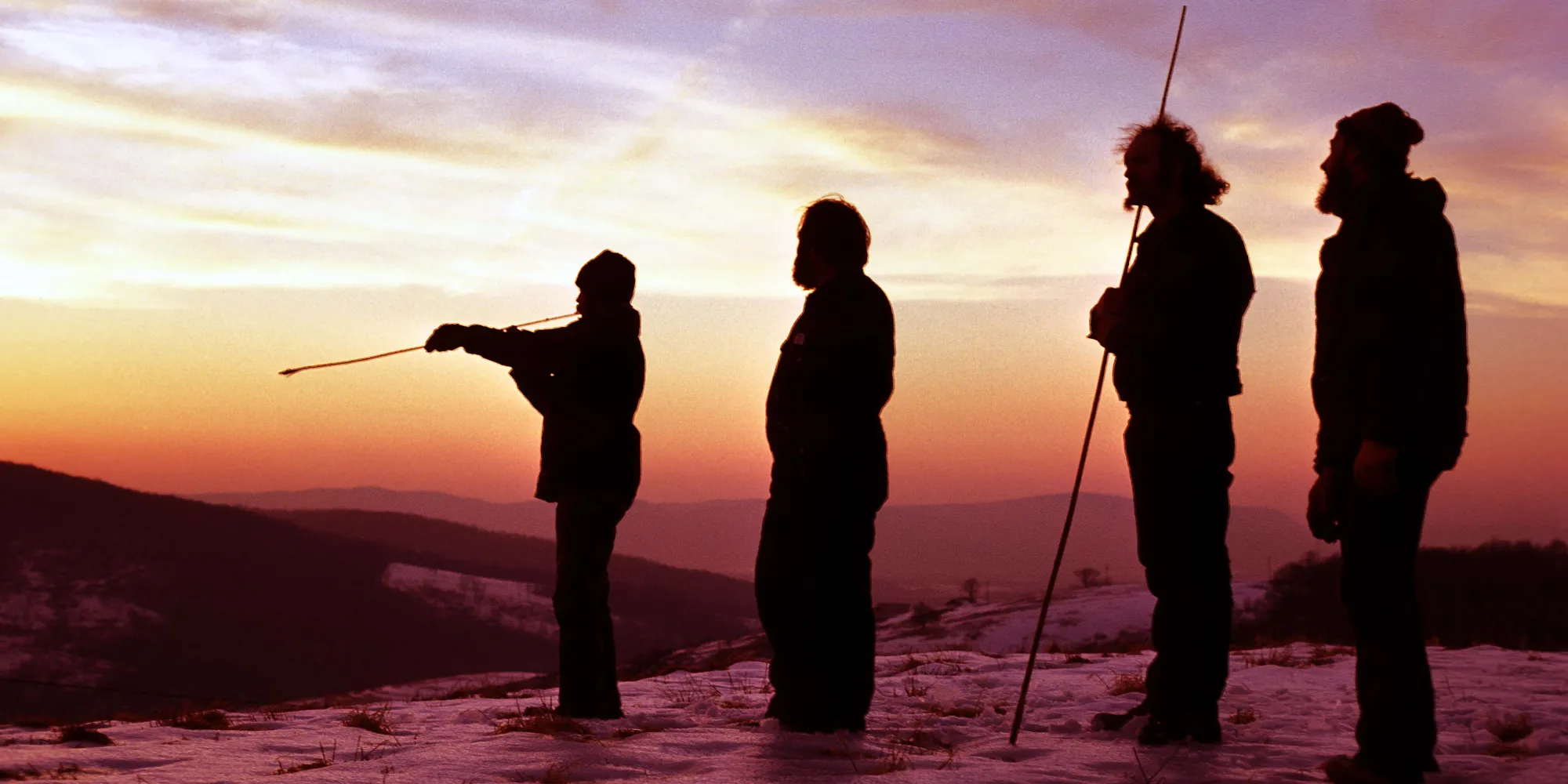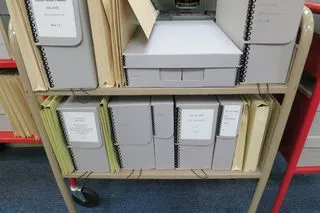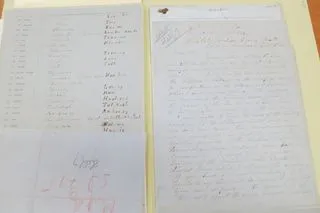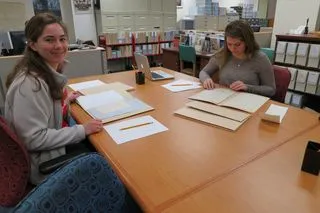
Search

News from Recovering Voices
Myaamia Students Rejuvenate Myaamia Language and BoL 2015 at the NAA
By: Laura Sharp with Jarrid Baldwin, Kelsey Godfroy, Megan Mooney and Ian Young
01/30/2015

Every 2 years approximately 30 community researchers come together for 2 weeks with a similar goal in mind: to revitalize or revive their languages. The National Breath of Life Archival Institute for Indigenous Languages (BoL) is an intensive 2 week hands-on workshop held in Washington, D.C. that provides training in the use of archival language documentation for the purposes of language revitalization or reclamation. According to UNESCO’s Atlas of the World's Languages in Danger, there are 191 languages in danger - from vulnerable to nearly extinct in the United States alone. In North America, that figure doubles to over 400 languages in danger of being lost. Many grassroots language revitalization initiatives have sprung up all across the US, Canada and Mexico in recent years in an effort to combat the crisis of language loss. One initiative, the Myaamia Center led by Daryl Baldwin at Miami University in Ohio, is at the core of the revival of a once dormant language. Daryl Baldwin, a linguist and member of the Miami Tribe of Oklahoma, has worked for over a decade on revitalizing the Myaamia language and culture by developing language based educational materials and raising his own 4 children as native Myaamia language speakers. His efforts have led to what is now considered a pioneering success story of language reclamation – the process of recreating new speakers of a language that had previously lost all of its speakers. Daryl is also the Principal Investigator for the 2015 National BoL which is co-hosted by Recovering Voices and the National Anthropological Archives (NAA) at the Smithsonian’s National Museum of Natural History, the Smithsonian’s National Museum of the American Indian, and the Library of Congress.
Planning for a National BoL starts well before the 30+ participants arrive. One key part of the planning takes place at the NAA at the Smithsonian Institution site in Suitland, Maryland several months before the workshop starts. During BoL, participants are given access to the vast array of material in the NAA and NMAI collections, however to make their time there most efficient, the relevant materials pertinent to the participants’ native languages are pulled, reviewed and digitized in advance. Typically, this process is managed independently by the Curator of Linguistics, Gabriela Pérez Báez over a period of several weeks. This time, BoL organizers, Myaamia Center and Recovering Voices, decided to create a unique, hands-on learning experience for the Myaamia students from Miami University by inviting them to the NAA and having them participate in the process of archival material selection directly. The Myaamia Center selected 3 tribal students: Kelsey Godfroy, Megan Mooney, and Ian Young who were accompanied by Jarrid Baldwin, an alumni, and the son of Daryl Baldwin raised as a speaker of Myaamia.

Students worked in the NAA for a full week, from 12-16 January, examining various archival language documentation, notebooks and historic records of over 15 North American indigenous languages. The week concluded with an unplanned, but fortuitous visit to the collections of yet another BoL partner, the National Museum of the American Indian, which holds material culture of their very own heritage, Myaamia material. This opportunity was particularly beneficial to Ian Young, who is currently doing research for his senior project wherein students are encouraged to pursue a project of familial relevance. His project, recreating a traditional hunting bow, reaches back to his great, great grandfather who was a master bow craftsman. Ian, who is the first speaker of Myaamia in his family for several generations, is witnessing a “…language and cultural revival back up through generations" in his family as his siblings and parents become interested in Myaamia as a result of his connection to it through the Myaamia Center program.
For Megan Mooney, working with the archival materials at the NAA was a notable experience on two personal levels. “Being able to pore through primary documents in the actual Smithsonian was incredible. I got to pick through old papers and books (carefully) and try to get an idea of which resources would be most helpful in revitalizing indigenous languages…” she explained. “I had no idea we would get such a vital task. I probably would have been content delivering coffee as long as I got to work in the archives of the Smithsonian. With the exception of Jarrid, our supervisor, none of us had much experience with native languages, yet all of our opinions on the research we did while there were listened to and respected”.

Kelsey explained how “few people can say that they have had the chance to work with documents like these. I learned how challenging it is to revitalize a language. I have seen how much work it would be and I have gained an even greater appreciation of those people putting in the time and energy”. Working with the materials, Kelsey learned about the revitalization efforts of numerous tribes, “which was something I had not given much thought to previously.” She went on to say how she was “able to relate what I have been learning about the Myaamia revitalization efforts to those of other tribes”. Her favorite part about looking through the Myaamia related documents was “…being able to talk and share what we found with each other. We saw vocabulary, stories, speeches, prayers, etc. Jarrid was able to explain some questions we had or were interested in knowing more about. As the week went on, we spoke more and more of the Myaamia language both inside and outside of the archives. Not knowing an abundance of the language or culture made it exciting when I found something I could relate to. It was interesting to see my last name appear in some of the documents. I recognized the names, but now I am motivated to find and learn more about the people that I have connections to”.

Even for Jarrid, an alumni of Miami University and someone involved in language revitalization within his community, the Miami Tribe of Oklahoma, for many years, this trip was inspiring. He shared that the week at the NAA “gave him the opportunity to look through various documents on “myaamiaataweenki, or the Miami language, and to see at the ground level what other tribes have in regards to documentation on their languages”.
He continued to say “…as someone who has only worked as a language learner (from others) and language teacher, I rarely have a chance to look at the primary sources on where our language today has come from. It is important to know the history of something so personal and it was a great opportunity to see where the revitalization efforts began. Working with other tribes’ language materials was a great way to see the bigger picture of language revitalization. I was able to learn about other efforts across the US, which helps me have a better understanding of where we sit in the overall picture. Seeing other tribe’s material and our own in the same week really made things come full circle…”

Throughout the week, all four participants could be heard discussing, debating, and joking in their native Myaamia language, not missing an opportunity to practice, or challenge each other on the use of the language. For Gabriela Pérez Báez, a linguist working on language revitalization for over a decade it was “…a week in which we have witnessed intragenerational transmission of knowledge and knowledge generation by the youth. (She was) amazed!...”. One concern about the fear of making mistakes, often a deterrent for learning any language, was also shared amongst the students; “The group discussed the notion that when learning Myaamia, they assume they will be often wrong so when they are not, it is very exciting and encouraging to them”. Mistakes and overcoming challenges in the face of considerable adversity, it seemed, was a large part of the learning process and something that the students continually work on throughout their studies, and throughout the process of revitalizing their culture and language; as are numerous other tribes across the United States.
Breath of Life Archival Institute for Indigenous Languages takes place from 1-12 June 2015 in Washington, D.C. Visit www.recoveringvoices.si.edu for more information about revitalization efforts at the National Museum of Natural History. Visit www.myaamiadictionary.org to learn more about Myaamia language, or www.myaamiacenter.org to learn more about the Myaamia Center at the University of Miami.